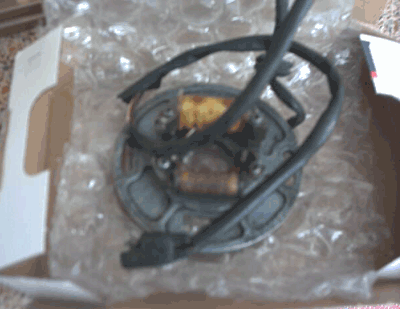ive started to Build a CDI from the bottom up,
its quite a simple design including one PIC 12F629 microcontroller, one Opto-Coupler and one BTX 18 SCR there is also lots of little tricks for keeping the high voltage stuff away from the IC's.
Ive calculated the delays by hand and there is a new delay for an increment of 100 rpm, my micro does not have muhc memory so im limited to that
But soon ill switch to an external eprom where i can hold many many curves
if you want the Source C code just ask
[ir]http://i27.photobucket.com/albums/c178/eoin_1987/IMG_0180.jpg[/ir]
Its only on breadboard now but soon its going to be on a PCB
[ir]http://i27.photobucket.com/albums/c178/eoin_1987/IMG_0179.jpg[/ir]
its quite a simple design including one PIC 12F629 microcontroller, one Opto-Coupler and one BTX 18 SCR there is also lots of little tricks for keeping the high voltage stuff away from the IC's.
Ive calculated the delays by hand and there is a new delay for an increment of 100 rpm, my micro does not have muhc memory so im limited to that
But soon ill switch to an external eprom where i can hold many many curves
if you want the Source C code just ask
[ir]http://i27.photobucket.com/albums/c178/eoin_1987/IMG_0180.jpg[/ir]
Its only on breadboard now but soon its going to be on a PCB
[ir]http://i27.photobucket.com/albums/c178/eoin_1987/IMG_0179.jpg[/ir]
Last edited:

